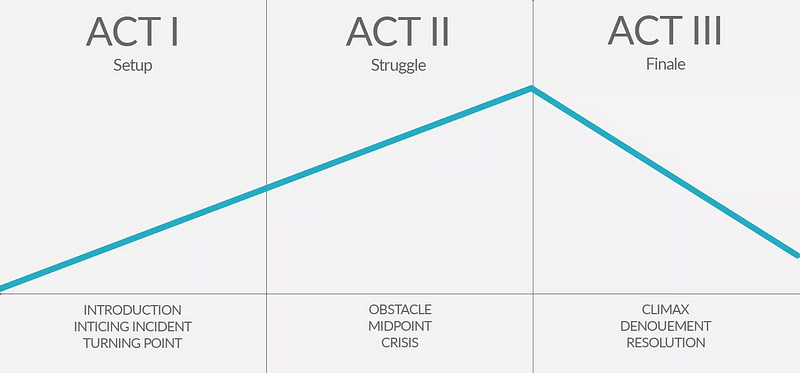
A way to overcome the barriers to an extremely beneficial habit, so you can begin reaping its benefits
Journaling is an enormously beneficial habit. But it can be difficult to stick with. One reason is that just opening a blank page — whether a piece of paper or a new, blank digital journal entry — can be intimidating. Where do you even begin? Without a good answer to that question, the freedom to just write anything can be overwhelming.
I am fortunate enough to have made journaling a habit, and I have come up with (or collected) a list of 6 solid methods to try, in order to keep the habit of journaling interesting — and therefore keep you engaged in it.
My suggestion is to try one of them each day, so that you end up with a week filled with a variety of entries. On the seventh day, you can simply free-write, or rest.
Journal from Others’ Perspective
If you’re like me, the busier you are, the more you can tend to get in your own head. When that happens, your relationships can suffer a bit. I’ve found it helpful to periodically journal as if from the perspective of other people in my life. I sit down and begin writing as if someone else in my life is writing in their journal about me. I write not in a contrived or presumptuous manner, but rather in a manner that gives them the benefit of the doubt, and views me as I must appear to those who don’t have a view of my thoughts and feelings.
Some key guidelines for using this journaling method:
- Give the other person’s account of what happened, ensuring to be sympathetic to them. Think of this as their first-person account in a story where they are the protagonist.
- Focus equally (if you can) on both their interactions with you and on their time during the day or week not spent with you, as it serves as a foundation for discussions you had with them, conflicts, etc. Try to form a sympathetic story around them that would (if it happened to you) explain (though not necessarily justify) their behavior.
- Write about what they may desire from you, and expect from you — and whether you’re meeting those desires and expectations. Also, talk about things they may be desiring, but not telling you.
The T.L.C Method
This might be my favorite journaling method (in fact, I’ve written an entire other piece about it). It’s the one I’ve done the most often, and it’s never failed to brighten my mood. There are 3 components to it, and the best way to use it is to start your day with it in mind, because it counts on your being able to pull 3 kinds of things about the day from your memory, and that’s where the T.L.C. acronym comes in.
- Thank
Think of something that happened during the day or week that your’e thankful for. It has to be specific, not a generic I’m thankful for my family. An example from my journaling is that I was thankful to the guy at the rental car counter at the Baltimore airport. He endured an encounter with a really tough customer in line before me, and still asked me how my day was (which was not great — it was almost entirely spent at airports). He also recommended a place to eat that night (that was still open at almost 10pm on a Monday). - Learn
I’ve long thought that you should learn something new each day. More specifically, every interaction you have should teach you something. Take some time to think about what you learned during the day, and write a bit about it. Perhaps write how you’ll use it, or if perhaps you have strong feelings about it, or a good story. - Connect
I use “connect” here in two ways:
(1) What things did you connect? In other words, what concepts did you make an analogy between or otherwise find an intellectual string tying one to the other?
Learning is all about connecting things in your mind. Take new information, and tie it in to well-worn knowledge. Find similarities and patterns.
(2) With whom did you connect? What conversations did you have, what were they about? What was the takeaway from each? What is that person excited about? What can you talk with them about in the future? What could you work on with them?
The 5 Whys Journal
In many ways, journaling is about getting a better understanding of yourself — past, present, and future. There’s no better way to get that understanding than to ask “why” for any feeling you’re having or issue you’re facing.
The “5 whys” is a problem-solving tool that helps to break down a problem, situation, or cause-and-effect relationship. It helps force our normally lazy minds to dig deeper by asking us to reexamine what we think are answers — but are normally incomplete answers. Many times, it takes asking “why” a few times to get to the complete answers we’re after.
Writing a 5 Whys journal is simple. You simply start by writing a problem that you’re facing at the top of the page. You then write the word “why”, and provide an answer. Repeat this until you have 5 whys answered.
Mundane things enjoyed
Gratitude Journals are all the rage, and there is good reason for that. Research continues to suggest that cultivating gratitude helps to keep you in a better mood. But once you’ve run down the list of the normal things to be grateful for (family, friends, partner, etc.), it can be difficult to come up with something to write about in a gratitude journal.
To this I say: what about that really awesome cup of coffee this morning? What about that hot shower after a long, difficult day? What about those 2 minutes where you stepped outside your house to get the mail, and the slight breeze hit you, with the sun warming your skin, and the birds chirping? It is these seemingly small moments that — when you really relish them — make for a wonderful life. But we often just let them pass without mention.
A great version of gratitude journaling is to write about a seemingly mundane moment that you enjoyed. Try to reconstruct it as best you can (you can use a little poetic license — it’s really about getting into a certain state of mind), and talk appreciatively about it. Talk about the specifics — the sensations and emotions you felt. Paint a glowing picture, and help yourself re-experience the little joy that you felt during that time. Most likely, you’ll feel a sense of peace and appreciation.
The 3 Act Journal
Most novels, plays, and movies can be divided into 3 acts: exposition, conflict, and resolution. Since the dawn of the spoken word, this structure has appealed to us as a means for transmitting and helping others understand events and their significance. Well, as it happens, journaling is a means for you to understand events that happened to you. So why not leverage the power of the story arc to understand your day or week?

The 3-act journal should center around something significant that happened to you.
- Act 1: The Introduction
Think about something that was pivotal in your day, something that you were able to resolve or make significant progress on. Explain the context and importance of it, as if you were writing a story. What was the sequence of events that led up to the main event? Who were the main players? What were their possible motives? What were yours? What conversations took place? What emotions were felt, and by whom? - Act 2: The Obstacle or Conflict
What happened? What was the pivotal moment, or pivotal choice? How did it play out? What emotions were you feeling as the event occurred? Did it go your way, or not? Did you handle yourself well, or not? - Act 3: The Resolution and Takeaway
The third act is normally seen as “falling action” or “resolution,” and thus where the reflection takes place. Use the third act to wrap things up, and bring your mind from that conflict, through the aftermath, and where you are now. Talk about whether you’d have done anything differently, what you learned about yourself and about others, and how you’ll approach similar situations in the future.
The Core Values Journal
Every year, I identify 3 values that I want to focus on for the year. For example, this year’s values are service, presence, and openness. Last year’s were simplicity, patience, and compassion. In order to keep those values front of mind, and as a way to check in on how well I’m living them, I’ll periodically write a journal entry that starts with 3 headings — one for each core value — and I write about things I’ve done throughout the week (or however long since I last wrote about them) that either show that I’m exemplifying the values, or show that I need to work on following them.
What makes these different styles work for me is that they do 3 things:
- Keep it fresh from day to day
- Eliminate the stress of having to start a journal entry from scratch
- Focus my daily activities on whatever it is I’ll be writing (so, I’ll be on the lookout for things to be grateful for, a little thing enjoyed, some connections I made, and so on).
That last point is important. While journaling itself can help you make sense of what already happened, a habit of journaling — especially about certain things — can alter your mindset and behavior throughout the day. If you consistently write about what you learned, or things you’re thankful for, you’ll tend to work toward having those things be parts of your day. It’s yet another great benefit of an already beneficial practice.
